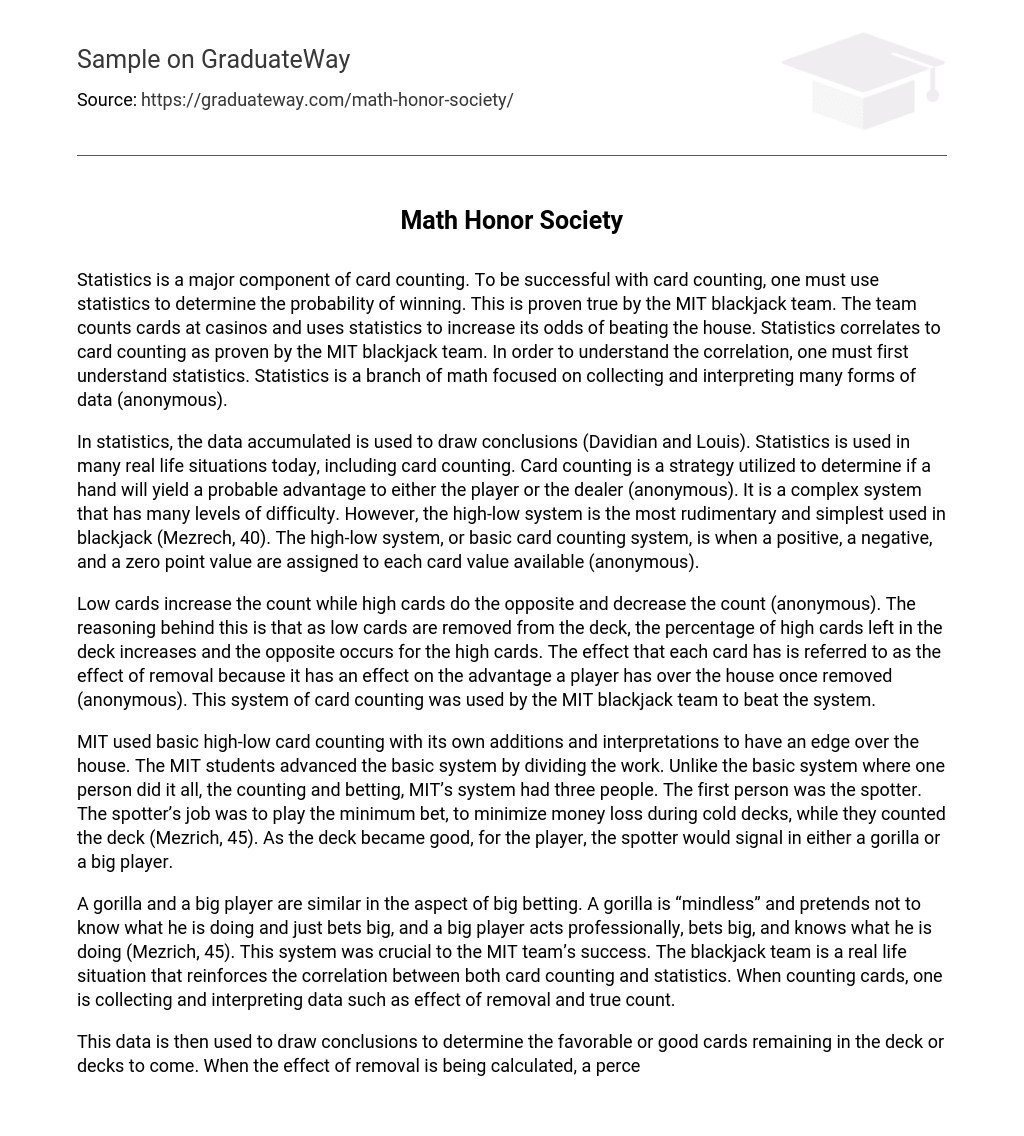Statistics plays a crucial role in card counting. The MIT blackjack team exemplifies how statistics can be utilized to enhance the chances of winning. By counting cards at casinos and employing statistical analysis, the team increases their odds of beating the house. Thus, statistics is directly related to card counting, as demonstrated by the MIT blackjack team. Nonetheless, comprehending this correlation necessitates a clear understanding of statistics itself. Essentially, statistics is a mathematical field dedicated to gathering and interpreting various data forms (anonymous).
In statistics, conclusions are drawn from accumulated data (Davidian and Louis). Today, statistics is applied in various real-life situations, including card counting. Card counting is a strategy used to determine if a hand will give an advantage to either the player or the dealer (anonymous). This strategy has different levels of complexity, with the high-low system being the most basic and simplest one used in blackjack (Mezrech, 40). The high-low system, also known as the basic card counting system, assigns a positive, negative, or zero point value to each available card value (anonymous).
The count increases with low cards and decreases with high cards. This is because removing low cards from the deck increases the percentage of high cards remaining, while removing high cards has the opposite effect. This is known as the effect of removal, as it impacts the player’s advantage over the house after card removal. The MIT blackjack team utilized this card counting system to outsmart the system.
MIT utilized a modified version of the basic high-low card counting strategy to gain an advantage over the casino. The MIT students enhanced the original system by delegating tasks among three individuals, rather than relying on a single person to handle both counting and betting. The first individual, known as the spotter, played with the minimum bet to minimize losses during unfavorable decks, while simultaneously keeping track of the cards in the deck (Mezrich, 45). As the deck’s condition improved for the player, the spotter would discreetly signal either a gorilla or a big player.
A gorilla and a big player have similarities when it comes to making big bets. A gorilla is characterized as “mindless” and intentionally acts like they have no knowledge of what they are doing, simply placing large bets. On the other hand, a big player is professional, makes substantial bets, and is fully aware of their actions (Mezrich, 45). This approach was essential to the MIT team’s accomplishments. The blackjack team’s real-life scenario further reinforces the connection between card counting and statistics. Counting cards involves gathering and analyzing data such as the effect of removing cards from the deck and calculating the true count.
The data obtained is utilized to make inferences and identify the advantageous cards still present in the deck or future decks. During the calculation of the removal effect, a percentage is also determined (anonymous). The percentage increases for player-favorable cards displayed, while it diminishes for the dealer’s (Wong). Another scenario that demonstrates the connection between card counting and statistics is the computation of the true count. To obtain the true count, the running count or current count must be divided by the remaining number of decks (Wong).
The true count is a ratio of advantageous high cards to low cards remaining for the player (anonymous). These instances demonstrate that the process of gathering and analyzing data, known as statistics, is connected to card counting. MIT’s blackjack team has established a strong correlation between statistics and card counting. In general, statistics involves collecting and interpreting data which is subsequently utilized to draw conclusions. Card counting is a tactic employed by blackjack players in order to calculate their advantage.
The MIT blackjack team utilized the basic system to gain an advantage by determining the percentage of high cards remaining in the deck. This real-life example demonstrated the connection between statistics and card counting. The determination of percentages and ratios in card counting involves statistical analysis and interpretation of data. MIT’s blackjack team effectively demonstrated how card counting exploits the statistical nature of blackjack.





